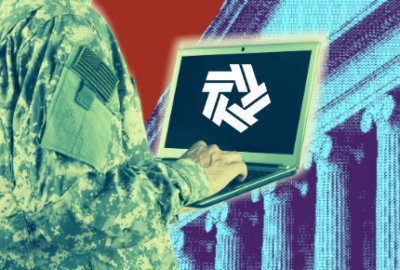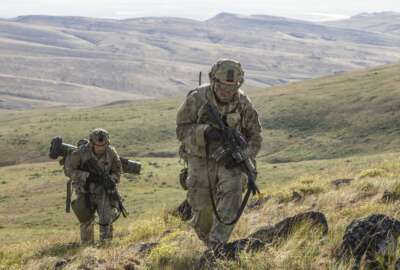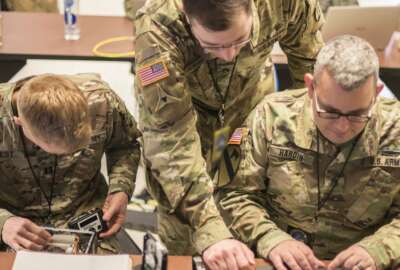The Army said that it is not expecting delays in further implementation of its human resources IT overhaul, called the Integrated Personnel and Pay System – Army (IPPS-A), after putting a hold on the most recent release of the program.
Lt. Gen. Gary Brito, deputy chief of staff for the Army G-1, said taking a nine-month pause now on introducing the third release of IPPS-A gives the service enough lead time to mitigate further delays in the rolling out talent management initiatives tied to the program.
“The fact that we made the early decision … now allows us to put all the mitigation measures in place,” Brito told reporters Monday at the Association of the U.S. Army conference. “We have plenty of time to make the same decisions we would have made nine months ago if we stayed on track.”
That prediction is good news for soldiers and the Army alike. The Army is using the system for things like a talent management marketplace, which pairs commanders and soldiers based on their talents and needs. It also helps with changes to new orders.
Brito said he could see the possibility of some minimal delays in permanent changes of station.
“If you just simply pick up the calendar and look at the objectives that we will achieve with Release 3, they just move into calendar 2022,” Brito said.
IPPS-A’s Release 3 launch was supposed to take place in December, it now will happen in September 2022.
Release 3 will give essential personnel service and talent management abilities to all three Army components.
That includes using things like the Army Talent Alignment Process, which is a market-style hiring process for soldiers. Enlisted soldiers and officers will still be able to access that through other HR systems. Brito said all legacy HR systems will remain intact as well to keep soldiers pay and benefits straight.
The jury is still out on Release 4, the future iteration of IPPS-A. That part of the system will give all components pay services through IPPS-A, and after that the Army will weave in smaller updates.
The Army has yet to award a contract for that aspect of the program.
The service delayed Release 3 because of interface and data-integration challenges.
“I think we have the right leadership behind it,” Brito said. “The intellectual investments behind it, the fiscal investments behind it as well are there. But the integration test must be done right, in order to allow the limited user test and Release 3 to work for the entire Army.”
IPPS-A has had some cost growth and time slippage in the past. Original estimates on the program had the Army hitting the payroll phase by 2016, according to a 2012 congressional hearing. That is now slated for the mid-2020s.
The Army awarded a five-year, $159 million contract to CACI in 2015 to develop the program. It won a second two-year, $112.5 million contract modification in 2019 for continued support work on IPPS-A.
Adding in other contracts related to development, support and equipment for the program, the Army has already spent about $900 million on building IPPS-A, and another $200 million on testing, support and implementation. It has another $77 million budgeted for development in 2022 and $16 million for training.
Copyright
© 2024 Federal News Network. All rights reserved. This website is not intended for users located within the European Economic Area.






